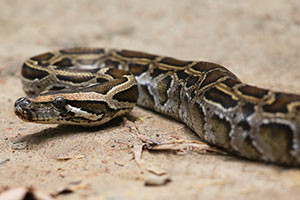Many non-native species in Florida and other parts of the world have become so commonplace and blend in so well with the natural ecosystem, that many natives to the area don’t even realize they are in the presence of relative newcomers. Others make their presence known fiercely, eradicating those who stand in their path and causing horrific and permanent impacts to the original ecosystem. While scientists can attempt to predict the results of such introductions and avoid any negative consequences, nature is at heart unpredictable.
Though no one can predict the results of introducing non-native species to new environments, it is the result of human involvement in nearly all instances. There are generally five major reasons why non-native species are introduced intentionally:
- To make money – Most commonly, the introduction of non-native species has economic motivations. Fish have been introduced as sources of food, mammals as sources of fur, and even trees as sources of lumber.
- To remind people of home – Though not so much the case in present day, in the past some species were brought along with immigrants as they started lives in new places. Though the intentions were often innocent, the effects could be detrimental.
- To look nice – Sometimes species are brought to new places for reasons as simple as their aesthetic appeal. This is more often the case with plants, which are sometimes transported for decorative purposes.
- To provide sport – This is more often the case with fish, for example, when brown trout were brought over to America from England. In some instances, the introduction of a single non-native species can bring both financial and recreational gains.
- To solve problems – In modern times, this is why invasive species are most commonly introduced – with good intentions and to solve a current economic or ecologic problem. For instance, one such invasive species that poses a particular threat in South Florida, the cane toad, was initially introduced to control sugar cane beetle populations that were decimating crops.
It’s important to remember that while you can pinpoint various reasons for intentional release of non-native species, not all instances involve intentional release. Furthermore, because the original source can be so difficult to pinpoint, it can be difficult to truly know whether release was accidental or not. A good example is the Burmese python, another invasive species that can be found throughout the Everglades. While there is much speculation, it is actually unclear whether the Burmese python explosion in South Florida was the result of the snakes finding their way onto ships headed from Asia to Miami or simply the result of locals releasing their unwanted pets into the wild.
Fortunately, the Florida Everglades has many beautiful and unique native species that still call the area “home.” These include American alligators, flamingoes, and the Florida panther, just to name a few. To view any of these magnificent animals in their natural habitats, as well as possibly one or two species that don’t belong, take an airboat ride through the Everglades with Captain Mitch. Florida swampland tours were meant to be enjoyed by the entire family, and offer plenty of educational opportunities as well as entertainment.







